Expert Guide to Replacing Your Sink Stopper

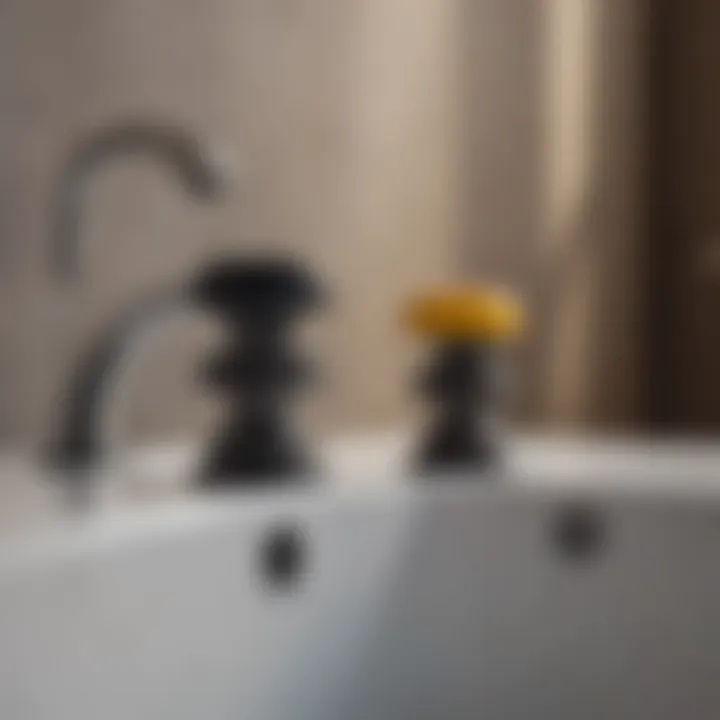
Overview of Topic
Replacing a sink stopper might seem trivial, yet it plays a crucial role in maintaining the functionality of kitchen and bathroom sinks. A sink stopper is vital for holding water in the basin, making it an essential component for everyday tasks such as washing dishes or taking a bath. When a sink stopper malfunctions, it disrupts this routine. Therefore, understanding how to replace it is fundamental for homeowners.
The significance of this task extends beyond mere convenience. A properly functioning stopper helps prevent water wastage and reduces plumbing issues. An effective stopper can also contribute to the overall aesthetic of your sink, particularly in bathrooms where visuals matter.
Common Challenges and Solutions
Homeowners face several challenges when dealing with sink stoppers. Some common issues include:
- Misalignment: A stopper that does not fit securely can lead to water leaks.
- Clogging: Debris can accumulate around the stopper, hindering its performance.
- Wear and Tear: Over time, materials used in stoppers can degrade, making them less reliable.
To address these challenges:
- Regularly inspect your sink stopper for any signs of damage or wear.
- Clean around the stopper to remove debris.
- When performing replacements, ensure the new stopper is the correct size and type.
"Regular maintenance of sink components can prevent larger plumbing issues down the road."
Product Recommendations
Selecting the right sink stopper is essential for optimal performance. Here are some top-rated products in the market:
- Keenovo Kitchen Sink Stopper: Known for its durable silicone material, it easily conforms to various sink sizes.
- Danco 1-1/2 in. Chrome Sink Stopper: Offers a sleek design and chrome finish, enhancing the sink's appearance.
- Moen Replacement Stopper: Compatible with Moen faucets, it ensures proper functionality and longevity.
Each of these products boasts features designed to provide long-lasting service, helping to maintain your sink's efficiency.
Step-by-Step Guides
Replacing a sink stopper can be straightforward if you follow the right steps. Here is a guide:
- Gather Your Tools: You will need a wrench, pliers, and a replacement stopper.
- Turn Off Water Supply: Before starting, ensure the water supply is off to prevent any flooding.
- Remove Existing Stopper: Loosen the nut holding the stopper using pliers. Pull it out gently.
- Clean the Area: Remove any debris or old sealant from the sink’s drain hole.
- Insert New Stopper: Place the new stopper into the hole and secure it with the nut. Ensure a tight fit to prevent leaks.
- Test the Stopper: Turn the water supply back on and check for any leaks.
By following these steps, you can seamlessly replace your sink stopper, ensuring a functional and efficient sink.
Understanding Sink Stoppers
Sink stoppers are a vital element in maintaining the functionality of your kitchen or bathroom sink. They function to prevent water from draining, allowing the user to fill the sink basin for various tasks like washing dishes or soaking laundry. Understanding the different types of sink stoppers, their functions, and how they work is essential for effective replacement and maintenance. When a sink stopper fails, it can lead to nuisance leaks or drainage issues, necessitating timely attention to keep your sink operating efficiently.
Types of Sink Stoppers
Different types of sink stoppers are available, each serving distinct purposes and offering unique benefits. Knowing these differences is key when selecting the right one for your needs.
Pop-Up Stoppers
Pop-up stoppers are among the most common types found in residential sinks. They work by a simple mechanism that raises or lowers the stopper with a lift lever. Their key characteristic is their ease of use, as they can be operated with a simple pull. This makes them a popular choice due to user-friendly operation. The unique feature of pop-up stoppers lies in their snap-fit design, ensuring a snug fit that prevents leaks. However, they may require occasional cleaning to avoid debris buildup that can hinder functionality.
Push-and-Pull Stoppers
Push-and-pull stoppers function similarly to pop-up stoppers but without the lifting mechanism. Instead, they operate by pushing down to stop water and pulling up to let it drain. This type is favored for its simplicity and straightforward design. The key characteristic is its mechanism that allows for quick access to the drain. However, it may not hold water as securely as some other designs, leading to unwanted slow leaks in some cases.
Lift-and-Turn Stoppers
Lift-and-turn stoppers operate by turning a knob to lift and lower the stopper. They are appreciated for their ease of installation and maintenance. The prominent characteristic of lift-and-turn stoppers is their compact nature, making them suitable for various sink designs. A distinctive advantage is their ability to create a secure seal, but if the mechanism wears out, it may become less effective, requiring timely replacement.
Toe-Touch Stoppers
Toe-touch stoppers are another practical option, allowing users to engage or disengage the stopper with a tap of their foot. This design is especially convenient for busy individuals. The key feature is its hands-free operation, reducing the need for direct contact with potentially dirty sink surfaces. While toe-touch stoppers provide ease of use, they can be prone to mechanical failures over time and may require more frequent servicing compared to other types.
Importance of Crafting Quality Stoppers
Crafting quality stoppers is crucial in prolonging the lifespan of your sink and ensuring it functions as intended. Poorly made stoppers can lead to water leaks, which can cause damage not only to the sink but also to the surrounding cabinetry and flooring. A high-quality stopper enhances the sealing capabilities and supports efficient drainage. Moreover, choosing the right stopper based on material and design can affect overall performance. Regular maintenance and prompt replacement when issues arise can save homeowners from costly repairs in the long run.
Quality stoppers are not just functional but contribute significantly to the overall efficiency of your plumbing system.
Preparing for Replacement
Replacing a sink stopper is not just a simple task; it involves careful preparation to ensure everything is done correctly. The importance of preparing for this replacement cannot be underestimated. This phase lays the groundwork for a smooth installation. When you take the time to prepare properly, you avoid potential issues later on, making the entire process more efficient and less stressful.
Firstly, understanding the type of stopper you need is crucial. Each sink design may require a specific kind of stopper, and knowing this beforehand emphasizes the importance of selecting the right one. Incorrect choices can lead to leaks or improper function, which is counterproductive. Furthermore, preparing the work area contributes to safety and convenience, enhancing your overall effectiveness.
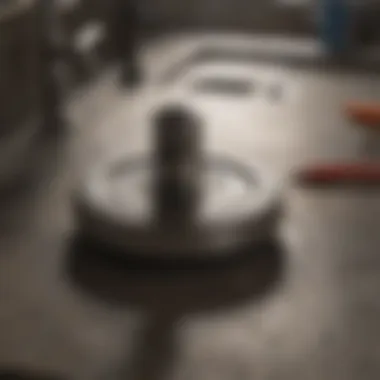
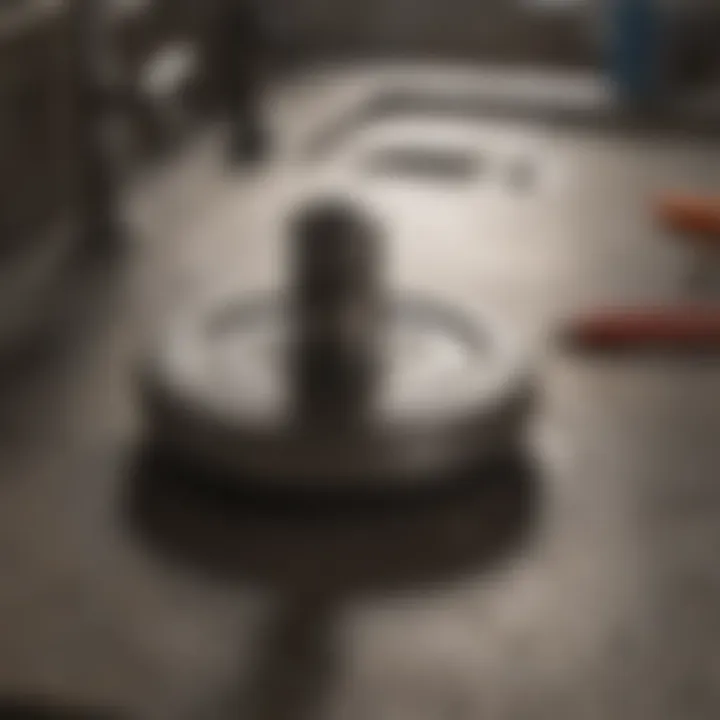
Identifying the Right Replacement Stopper
Measuring Sink Drain Dimensions
Measuring sink drain dimensions is a fundamental step when it comes to replacing a sink stopper. This measurement ensures that the new stopper fits perfectly within the drain. It is essential to consider both the diameter of the drain and the depth of the sink. This simple action provides clarity on what you need, leading to a more informed purchase.
An accurate measurement helps prevent buying a stopper that is too small or large, which is a common mistake. Therefore, investing time in this aspect of the process is highly beneficial. It saves time and frustration, contributing directly to achieving a satisfactory end result.
Choosing Material and Finish
The choice of material and finish for the sink stopper plays a significant role in both utility and aesthetics. Common materials include chrome, brass, and plastic, with each offering distinct advantages. Chrome, for example, is known for its shiny appearance and corrosion resistance. On the other hand, brass brings durability and a classic look.
Finishing touches matter too; the right finish can complement the overall decor of your kitchen or bathroom. Selecting a stopper with the suitable material and finish not only enhances the sink's functionality but also contributes to the overall charm of the space. In this regard, making the right choice helps in long-term maintenance, as some materials are easier to clean than others.
Gathering Necessary Tools
Wrenches
Wrenches are an essential tool for replacing a sink stopper. They help in loosening and tightening nuts that secure various components. A good-quality adjustable wrench is particularly useful because it can fit multiple sizes of nuts and bolts, offering versatility.
Using the right wrench adds an extra layer of convenience and efficiency. A tool that fits well prevents stripping and damaging parts. Therefore, having a suitable wrench for the job ensures that each connection is secure, contributing to the effectiveness of the installation process.
Screwdrivers
Screwdrivers are equally important in this task. They are used to remove and secure screws that hold parts of the stopper mechanism in place. It's advisable to have both flathead and Phillips screwdrivers at hand, as different designs may require different types.
Proper screwdriver choice is beneficial. A well-fitted screwdriver decreases the chance of slipping and damaging screws, which is a common issue with insufficient tools. This can save time and effort when trying to replace a stopper.
Plumber's Putty
Plumber's putty is a critical material used during the installation process. It creates a watertight seal between the stopper and the sink, preventing leaks. Use of plumber's putty ensures that the connection between the stopper and drain is secure and reliable.
The unique feature of plumber's putty is that it remains flexible after application, allowing for adjustments if needed. This quality can be advantageous, especially when aligning the new stopper for the best fit. However, it is essential to note that using too much putty can create mess, so moderation is key.
Precautionary Steps
Turn Off Water Supply
Turning off the water supply is a preliminary yet vital step in the replacement process. This action prevents any accidental flooding while working on the sink. If mishaps occur, having the water supply turned off minimizes damage and makes cleanup easier.
This precaution is beneficial as it provides peace of mind. Knowing that water won't unexpectedly flow during your working process increases safety, especially in smaller areas where movement is restricted.
Empty the Sink
Emptying the sink is another essential step. A clutter-free space facilitates better access to the stopper mechanism. Ensuring the sink is free of debris and dishes enhances visibility and efficiency while performing the task.
Moreover, an empty sink minimizes the risk of items falling into the drain or hindering your movement while working. Thus, taking the time to clear the sink directly impacts the overall success of the replacement process.
Removing the Old Sink Stopper
Removing the old sink stopper is a crucial step in the process of replacing it. It ensures that the new stopper can function effectively, preventing any future leaks or drainage issues. Understanding the proper procedures and considerations involved in this task will help streamline replacements and enhance the overall efficiency of your sink system.
Accessing the Stopper Mechanism
Under-Sink Inspection
Under-sink inspection is the first phase when accessing the stopper mechanism. It involves looking beneath the sink to locate various components related to the stopper’s operation. This step is essential because it allows you to see the pivot rod and related attachments that may need adjustments or removals.
The key characteristic of under-sink inspection is its ability to provide a clear view of the existing setup. This visual check helps identify any potential issues like rust or corrosion that could complicate the removal process. It is often seen as a beneficial choice since it gives insights into replacement needs and helps map out the steps ahead.
A unique feature of conducting an under-sink inspection is that it helps prevent accidental damage. By being fully aware of the layout and condition of parts, one can avoid unnecessary complications. However, this step may require some flexibility and careful movement under a limited space, which can be a disadvantage for some.
Removing the Pivot Rod
Removing the pivot rod is a significant aspect of this section. The pivot rod connects the sink stopper to the mechanism that controls its movement, making its removal vital for accessing the stopper directly. This process typically involves unscrewing or detaching the rod from its place.
The key characteristic of removing the pivot rod lies in its direct impact on the ability to take out the stopper. Without this step, it is nearly impossible to fully access the stopper for replacement. Its simplicity in nature makes it a popular choice for homeowners who prefer to engage in DIY home repairs.
A unique feature of the pivot rod removal is that it often requires minimal tools and time. This efficiency is an advantage, as it allows individuals to quickly and easily continue with the replacement without prolonged interruptions. A disadvantage might be the potential difficulty in accessing the screws if the under-sink area is cramped.
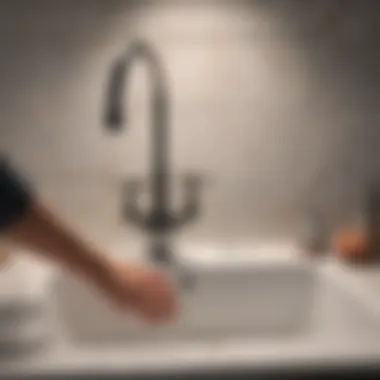
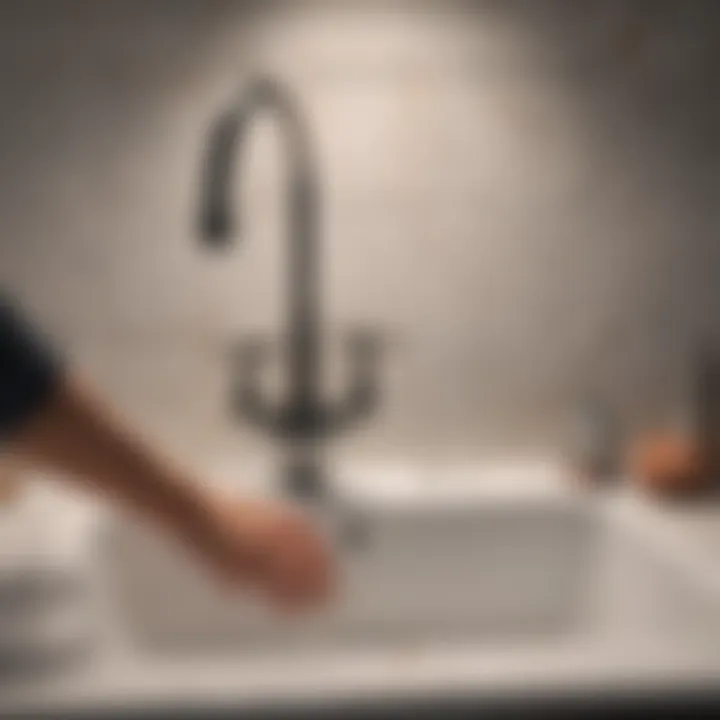
Detaching the Stopper from the Drain
Detaching the stopper from the drain consists of two main tasks: unscrewing the stopper and clearing any blockages that may be present. Both are critical in ensuring a successful replacement.
Unscrewing the Stopper
Unscrewing the stopper involves turning it counterclockwise to detach it from the sink drain. This step is fundamental as it allows for the immediate removal of the old stopper, making way for the new one. When performed correctly, this task can be quick and straightforward, which enhances the overall efficiency of the replacement process.
The key characteristic of unscrewing the stopper is that it is often the final physical action needed to release the old stopper. It acts as a critical link to moving forward in the replacement task. The simplicity of this action makes it a reliable method for many homeowners attempting repairs on their own.
One unique feature of this step is that it requires little to no specialized tools, which is an advantage. However, there might be situations where stubborn buildup may cause complications during this process, leading to delays in replacement.
Clearing Blockages
Clearing blockages pertains to inspecting the drain area for any debris or build-up that could hinder the proper function of the new stopper. This step is essential as it ensures that the new stopper will not encounter the same problems faced by the old one. It not only improves drainage efficiency but also aids in maintaining hygiene within the sink.
The key characteristic of this section is that it requires careful attention to detail. Identifying and removing blockages is crucial for long-term functionality. This focus on cleanliness acts as a beneficial practice that reinforces the overall goal of achieving a fully functional sink system.
A unique feature of clearing blockages is the potential for preventive maintenance it offers. By addressing issues at this stage, it minimizes future repairs and replacements, which is an advantage for homeowners. On the downside, it may consume additional time, especially in cases where the build-up is severe, posing a challenge for some.
Installing the New Sink Stopper
The installation of the new sink stopper is a crucial phase to ensure your sink operates efficiently. Properly placing the new stopper not only enhances the functionality but also extends the life of your plumbing fixtures. This section will delve into key elements involved in this process, emphasizing the benefits of proper technique and consideration.
Preparing the Drain for Installation
Using Plumber's Putty
Plumber's putty is essential in creating a watertight seal around the sink stopper. This compound is easy to mold and works effectively with various sink materials. Its sticky nature allows for an excellent grip on the stopper while minimizing the risk of leaks. One unique feature of plumber's putty is its flexibility; it can adapt to changes in temperature and pressure, making it a beneficial choice for this task.
Using plumber's putty is popular among both professionals and DIY enthusiasts for its resilience and effectiveness. It is user-friendly and doesn’t require any special tools for application. However, a disadvantage could be its suitability depending on the material of your sink, as some finishes may not react well.
Cleaning the Drain Area
Cleaning the drain area is another vital step in preparing for a new sink stopper. The drain base must be free from debris, old putty, or any residues that may impact the effectiveness of the new installation. A clean surface promotes better adhesion of the stopper and prevents future leaks.
A key characteristic of this preparation step is thoroughness; every corner must be addressed. It can be labor-intensive, but ensuring a clean area is a beneficial strategy for longevity in performance. One unique aspect is that neglecting to clean can lead to blockages, compromising drainage efficiency. While cleaning can take time, the advantages far outweigh the drawbacks.
Attaching the New Stopper
Securing with Pivots
Securing the new sink stopper with pivots ensures stability and allows for smooth operation. The pivot mechanism is critical for the stop-and-go function of the stopper, allowing it to raise and lower efficiently when needed. This method is particularly beneficial as it provides a solid connection that reduces wear over time.
A unique feature of pivot securing is its adjustability. If things don’t align perfectly, slight modifications can often solve the issue effectively. However, it requires precision during installation; improper securing can lead to malfunction down the line.
Testing Alignment
Testing the alignment of the new stopper is a crucial final step. Ensuring that everything is set properly avoids operational issues after installation. Testing gives the assurance that the stopper will function as intended, maintaining the seal and preventing leaks.
This step is simple yet fundamentally important. A properly aligned stopper not only works effectively but also enhances the overall performance of the sink. Disregarding this step can lead to more complex adjustments later, so it is worthwhile to test thoroughly beforehand.
Testing Functionality
Testing the functionality of a newly installed sink stopper is a crucial step in the replacement process. It not only ensures that the stopper operates as intended, but also verifies that there are no leaks that could lead to water damage over time. This section will discuss how to conduct a thorough assessment of the stopper's performance, emphasizing the importance of each test.
Running a Water Test
Checking for Leaks
Checking for leaks involves examining the entire sink unit after the installation. This aspect is vital because even small leaks can cause significant damage if left unchecked. The main characteristic of this process is its straightforwardness and immediacy. A beneficial choice in this context, checking for leaks provides an opportunity to address issues right away, rather than discovering them later when potential damage has escalated.
The unique feature of checking for leaks is its ability to identify faulty connections or improperly sealed areas. If water drips from around the stopper or the plumbing connections, immediate action can prevent larger problems. One advantage is the peace of mind gained from knowing the installation is secure. However, the disadvantage may arise from the fact that some leaks might only become apparent after a few uses, necessitating ongoing vigilance.
Assessing Drainage Efficiency
Assessing drainage efficiency is another key component of ensuring the sink stopper functions properly. This involves running water for a period and observing how quickly it drains. A central characteristic of this test is that it determines whether the stopper effectively controls water flow. It is a popular choice in this guide because it provides immediate feedback on the performance of the stopper.
The unique feature of assessing drainage efficiency lies in its comprehensive evaluation of the system's effectiveness. A quick drainage process indicates proper installation and functionality, while slow drainage may suggest blockages or misalignments. The advantage here is that this test can also help diagnose other potential plumbing issues that may not be directly related to the stopper itself. On the other hand, if drainage problems persist after the tests, deeper issues may require further inspection or professional help.

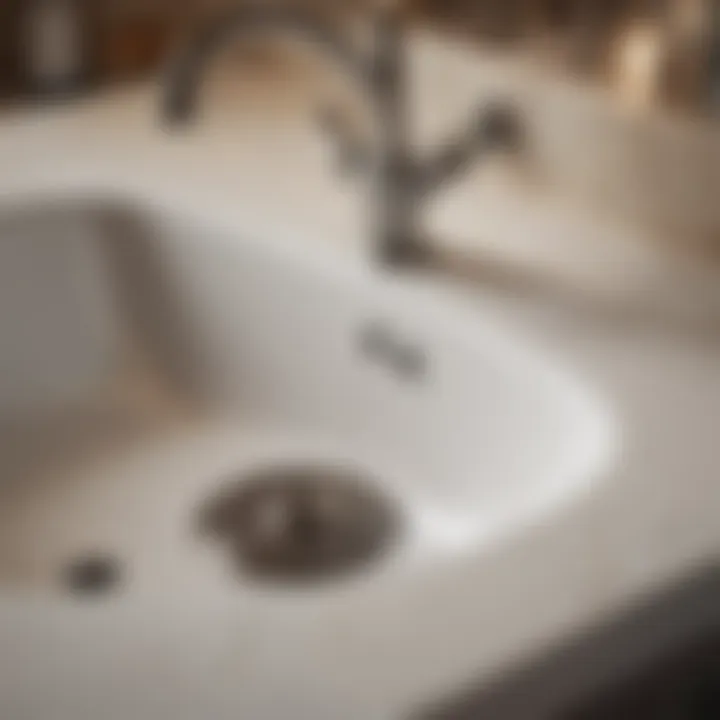
Adjusting the Stopper as Needed
After testing the functionality of the sink stopper, adjustments may be necessary to ensure optimal operation. This can involve tightening connections or repositioning the pivot rod.
Tightening Connections
Tightening connections is a simple but effective method of ensuring that all parts of the sink stopper system are secure. Essential for maintaining functionality, it can prevent leaks and improve the unit’s overall performance. The key characteristic of this procedure lies in its straightforward process and immediate impact on the user experience.
This adjustment is a beneficial choice because it allows for resolution of minor issues without requiring significant disassembly or tools. Tightening connections can significantly improve the seal and prevent water from escaping. A disadvantage, however, is the potential to overtighten and damage components if too much force is applied.
Repositioning the Pivot Rod
Repositioning the pivot rod is another adjustment that may become necessary during the testing phase. This aspect involves ensuring that the rod correctly links the stopper to the control mechanism. The key characteristic of this procedure is that it directly affects the stopping power of the sink mechanism.
This adjustment is a necessary choice to optimize water flow control and maintain ease of use. The unique feature of repositioning the pivot rod is that it can fine-tune the responsiveness of the stopper. When properly aligned, it gives a smoother opening and closing action. However, if done improperly, it may lead to dysfunctional operation, which can be frustrating for the user.
Troubleshooting Common Issues
When replacing a sink stopper, sometimes issues occur that can disrupt proper functionality. This section addresses common problems associated with sink stoppers and provides solutions. Understanding these challenges can save time and prevent further complications, ensuring that the sink works efficiently once the stopper is replaced.
Persistent Leaks
Persistent leaks can often be a significant problem when dealing with sinks. They usually manifest around the base of the sink or below, causing frustration and possible water damage. Identifying the source of a leak is crucial for effective troubleshooting.
Identifying the Source
Identifying the source of leaks involves a systematic examination of the sink's components. Focus on checking connections and seals where water may escape. One key characteristic of this process is attentiveness to potential wearing or degradation of parts that can allow water to seep out. Recognizing the signs of leaks early can prevent extensive damage in the future.
The unique feature of this approach is its thoroughness. It encourages evaluating not only the immediately visible components but also hidden elements under the sink or within plumbing. A careful inspection will usually reveal where the leak originates, whether from a worn washer or a loose connection. The advantage is that by pinpointing the source, a solution can be implemented without undue replacement of entire parts, saving both time and resources.
Replacing Washer Components
Replacing washer components is often necessary once the source of a leak is identified. This action directly addresses one common cause while also supporting the overall effectiveness of the sink’s draining system. A key characteristic of this process is its simplicity; it can usually be done without hiring a professional.
The unique aspect of this repair is that washers are inexpensive and easily obtainable from many hardware stores. Changing out a worn washer can restore the tight seal that prevents leaks. However, while this solution is generally effective, it may not address deeper underlying issues if the rest of the system is also beginning to show wear. Thus, regular maintenance is advisable to avoid future complications.
Poor Drainage
Sometimes a sink will drain poorly or not at all, causing frustration. This issue can arise from various causes, but identifying and rectifying it is essential for maintaining proper sink functionality.
Checking for Obstructions
Checking for obstructions is a crucial first step in resolving drainage issues. Common obstructions include food particles, grease, or hair that accumulate over time. This process requires careful inspection of the drain and plumbing. A key characteristic of checking for obstructions is the need for a proactive examination of both the visible areas and those that are less easily accessed.
One advantage of this technique is that it addresses the issue directly. By identifying and removing blockages, one can often restore normal drainage without further fix. The disadvantage, however, arises if significant build-up has occurred. In such cases, a more profound cleaning process may be necessary, such as using a drain snake or hiring a plumber, which could incur additional costs.
Ensuring Proper Seal
Ensuring proper seal is another important aspect of troubleshooting poor drainage. A defective seal around the sink stopper can also lead to waste build-up and improper draining. This involves checking all seals after installing the new stopper and ensuring everything is tightened correctly.
The characteristic feature of ensuring a proper seal is its emphasis on both initial installation and the ongoing maintenance required thereafter. Regular checks can prevent leaks and blockages from forming. Notably, this process is beneficial as it strengthens the overall functionality of the sink's plumbing. However, if seals are repeatedly found to be inadequate, it may indicate a more significant issue in the plumbing system needing immediate attention.
"Regular maintenance and timely troubleshooting can greatly extend the life of your sink's plumbing system and prevent costly repairs in the future."
Maintenance Considerations
Maintenance is crucial when it comes to sink stoppers. Regular attention can prevent small issues from escalating into larger problems, which can be costly and time-consuming to repair. Keeping a watchful eye on the condition of your sink stopper ensures optimal performance and longevity. It also improves the overall functionality of your sink, making daily tasks more efficient.
Regular Inspections
Performing regular inspections of your sink stopper can help identify wear and tear early. A fast check every few months can save trouble. Look for corrosion, rust, or any unusual signs of damage. If you notice any changes in how the stopper operates, take it seriously. The sooner you address these issues, the less likely they are to become major problems later.
Cleaning Techniques
Cleaning your sink stopper well is vital for maintaining its function. Ensure that you remove any build-up from food or soap. These can create clogs or odors. Adopt a two-step approach for effective cleaning:
Removing Debris
Removing debris plays a significant role in ensuring a smoothly functioning sink stopper. Over time, residues can accumulate and hinder its operation. An essential characteristic of this cleaning technique is its simplicity. You just need to check the stopper for any visible debris and promptly remove it. This method is popular because it is efficient, requires no special tools, and can be done in a matter of minutes. Moreover, this approach helps to avoid more complex problems.
Using Safe Cleaning Agents
Using safe cleaning agents is another important aspect to consider. Chemical cleaners can sometimes do more harm than good by damaging the materials of the stopper or producing harmful residues. A key characteristic of safe cleaning agents is that they are gentle yet effective. Choosing these agents contributes positively to maintaining your sink environment without introducing toxic elements. Their unique feature lies in their balanced formulation, ensuring a thorough clean while protecting the components. Overall, this method is beneficial because it promotes a healthy living space while ensuring your sink functions as expected.
"Prevention is always better than cure." Regular maintenance helps keep your sink stopper in top shape, reducing the likelihood of inconvenient issues.







